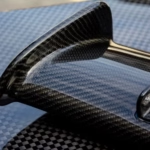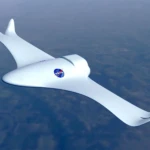As a professional five-axis CNC machining manufacturer, excellent light has advanced equipment and production technology to solve metal parts manufacturing problems. A key aspect of CNC machining is tolerance, which refers to an acceptable limit on part size changes. In this article, we will dig into the world of CNC machining tolerances, exploring what they are, why they are important and how they are implemented.
CNC machining tolerances are critical to ensure that parts fit correctly, operate as expected and meet the required specifications. Tolerances are usually specified as a range of values, with a nominal dimension, and with a plus or negative deviation from that dimension. For example, the dimensions may be specified as 10mm +/- 0.1mm, meaning that the acceptable range is between 9.9mm and 10.1mm.
Several types of tolerances are used in CNC machining, including:
- Geometric tolerances: These refer to acceptable limitations of the shape and direction of part features, such as flatness, straightness, and circles.
- Dimensional tolerances: These refer to acceptable limitations on the size of part features, such as length, width, and height.
- Surface Tolerances: These refer to the acceptable limits of variation in surface roughness and texture of the part.
Implementing exact tolerances in CNC machining requires careful consideration of several factors, including the function of the processing equipment, the characteristics of the material being processed, and the design of the part itself. Great Light’s advanced five-axis CNC machining equipment and production technology enables us to achieve tight tolerances and high accuracy in machining operations.
To ensure that the parts meet the required tolerances, excellent light uses a variety of techniques, including:
- Precision machining: Our equipment is capable of achieving high precision and accuracy, allowing us to produce tight parts.
- Quality Control: We have a strict quality control process to ensure that all parts meet the required specifications and tolerances.
- Check: We use advanced inspection equipment to verify that parts meet the required tolerances and specifications.
In addition to achieving precise tolerances, Great Light offers a range of post-processing and completion services to improve the quality and appearance of our parts. These services include grinding, polishing and finishing.
In summary, CNC machining tolerances are a key aspect of producing high-quality parts that meet the required specifications and functions. By understanding the different types of tolerances and the factors that affect them, manufacturers can ensure that their parts are produced with the accuracy and accuracy required for their application. With its advanced equipment and production technology, excellent light equipment can meet the tolerance needs of a wide range of industries and applications.
FAQ
- What is CNC machining tolerance?
- CNC machining tolerance refers to the acceptable limits of variation in part size.
- Why is tolerance important in CNC machining?
- Tolerances are important because they ensure that the parts are properly fused together, running as expected and meeting the required specifications.
- What are the different types of tolerances used in CNC machining?
- Different types of tolerances used in CNC machining include geometric, dimensional, and surface surface tolerances.
- How to achieve exact tolerances in CNC machining?
- Accurate tolerances are achieved by taking into account the functions of the processing equipment, the characteristics of the material being processed, and the design of the parts themselves.
- What services does the great light offer to improve the quality and appearance of its parts?
- Great Light offers a range of aftertreatment and finishing services, including grinding, polishing and finishing coatings to enhance the quality and appearance of its parts.

















